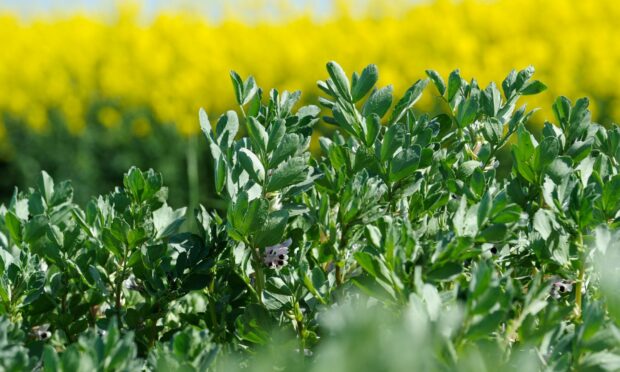Faba beans can incorporate more than 400kg of nitrogen per hectare thanks to the symbiosis between legume crops and soil bacteria, a research team from the James Hutton Institute (JHI) has discovered.
The findings come at a time when synthetic fertiliser prices are soaring and farmers are focusing on meeting net-zero goals.
Although the potential of grain legume crops such as faba beans to harness the nitrogen present in air into biologically useful forms is well known, this is the first UK-wide measurement of nitrogen added by the crop.
The study looked at a range of production systems, including the use of long-term crop-rotational data from the institute’s own Centre for Sustainable Cropping (CSC), and found that the beans’ ability to harness naturally occurring atmospheric nitrogen negated the need for added synthetic nitrogen.
The residual stems, roots, and pods were an added bonus as they decay into the soil as a natural fertiliser, and general soil improver.
Prof Euan James, a research leader at the Institute’s Ecological Sciences department and co-author of the study, said: “This demonstrates the huge potential grain legumes such as faba bean could provide in achieving zero-carbon agriculture, as well as meeting Scotland’s ambitious greenhouse gas emissions reduction targets.”
Dr Pete Iannetta added: “The ability of beans to fix nitrogen from air presents an opportunity by which the environmental damaging impacts of excessive synthetic nitrogen fertiliser use may be avoided.
“We are fortunate to have the incredible long-term whole-system datasets of the CSC.
“There is nothing like it globally for agroecological studies of arable cropping.
“This, allied to a fantastic team of collaborators from across the UK, including farmers – has allowed us to achieve a strong foundation for future environmental impact assessments.”
The CSC was established in 2009 to design an integrated cropping system and test the long-term impacts on biodiversity and whole-system sustainability.
CSC researchers are also looking at how to minimise pollution and losses through run-
off, leaching, erosion and greenhouse gas emissions.

